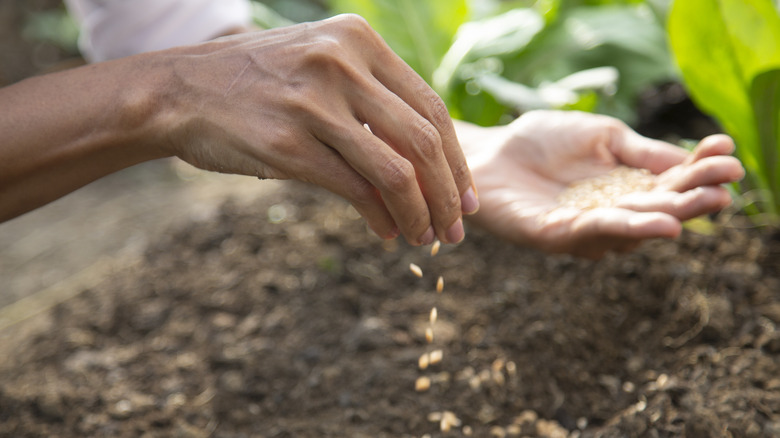Seeds That You Should Buy For Unique Color Varieties In Your Garden
Flower gardens can satisfy the human need for beauty in our lives and help us to feel more connected to nature. Those lucky enough to call themselves gardeners tend to be more aware than most of just how important our Earth is to us, which is why we need to create our garden design around the needs of our native wildlife. If you are looking for a lot of variety and color in a flower garden and want to be a caretaker of our environment, you can't go wrong buying and planting wildflower seeds.
A wildflower garden attracts pollinators like bees and butterflies. It lures insects and provides seeds that local birds can eat. Butterflies and moths can lay their eggs in wildflowers, and they provide shelter and nesting materials for animals that live nearby and help them thrive. And those who grow a wildflower garden get to enjoy a constantly changing landscape of flowering colors, shapes, and sizes.
How to choose the right wildflower seeds to buy
The first thing you need to know when buying wildflower seed is that not all seeds are the same. The best practice is to use seeds that are native to your area. This benefits native wildlife because you're growing plants and grasses that have already adapted to the climate and growing conditions in your area. It's easier on water supplies for the same reason.
You can plant a wildflower seed mix to help take the guesswork out of making the right choices for your area. Many reputable seed companies sell such mixes for different parts of the country. You can also buy specific mixes — such as deer-resistant, drought-resistant, or wildflowers for partial shade — for whatever your situation happens to be. Just be sure to avoid those big box store wildflower seed mix bags. Many don't contain a true native seed mix.
Planting and growing wildflowers from seed
Make sure the site you choose for your garden is an area with full sun. Most wildflowers need those conditions for optimal performance. It's a common misconception that wildflowers will grow just anywhere. While most tend to tolerate poor soil, it's best to remove existing plant growth, grass, or weeds from the soil before seeding. This way new seedlings don't have to compete with other plants for water and space.
Now mix your wildflower seed with sand to help the seed spread evenly across the soil. Sow the seed by hand, covering the entire area you want to plant. Make sure that it has good contact with the soil to help with seed germination. You can do that by laying a piece of cardboard over the surface you just seeded, and then walking over the cardboard to compress the soil. It's important that you do not cover the seed as wildflowers need light to sprout. Now water with a gentle spray nozzle and keep moist until the seedlings are at least 6 inches tall. After they get established, you can water less often.


